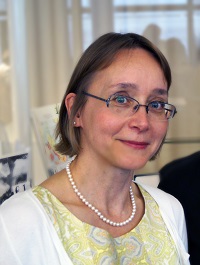Commercial or non-commercial? Trends in funding and distributing Finnish academic journals
DOI:
https://doi.org/10.7557/5.3940Abstract
Watch the VIDEO of the presentation.
This paper examines trends in funding and distributing academic journals in Finland. Scholarly societies have been major actors in the field of academic publishing since the nineteenth century. First, they funded their own journals but the system of government subsidies was created already in the middle of the nineteenth century. Hence, the societies were freed of the necessity of selling publications. Instead, publications were distributed by exchanging them with other societies and institutions. At the time, the scholarly community was often called “Republic of Letters” – the concept mirrored an ideal of free, egalitarian and collaborative world of researchers. Exchange of publications was a part of this ideal. Commercial scientific publishing began to prosper in Germany at the end of the nineteenth century. Only in the 1980s, did the trend towards commercial distribution strengthen in Finland. Bookstore Tiedekirja was founded to promote selling and marketing society publications. Societies were advised to restrict the number of exchanges and promote selling instead. The government subsidy was restricted to cover only a minor share of costs of publishing. The national service for electronic distribution of journals “Elektra” was based on the license fees paid by the research libraries. Yet, the income of sales and licenses remained modest. The subscription fees were very low. Income from Elektra was far from sufficient so that the journals had to maintain their printed versions. The international Open Access movement, which actually is not so far from the old ideal of the “Republic of Letters”, was introduced in Finland, in 2004. Its first agents were libraries and some universities. In the 2010s, it became the policy of the ministry of education and major research funders. Yet, the structures of commercial distribution created in the 1980s and 1990s proved to be an obstacle in making the scholarly journals open. Even though the money involved in publishing was insignificant in comparison with major international publishers, the societies were cautious in abandoning the sources of income they had managed to establish. Therefore, to promote Open Access publishing, a new funding model is needed. The history of academic publishing can be understood as a closing circle – from the non-commercial system of exchanges via period of commercializing to the non-commercial open world. This vision supports the funding system where journals or articles are funded collectively, e.g. via a consortium of institutions which need the domestic journals as a publication forum. Another way to look at history is to see varying trends, which leads one to predict an era of commercial interests. In the era of open publishing, the commercial vision probably manifests in funding by article processing charges.
Metrics





